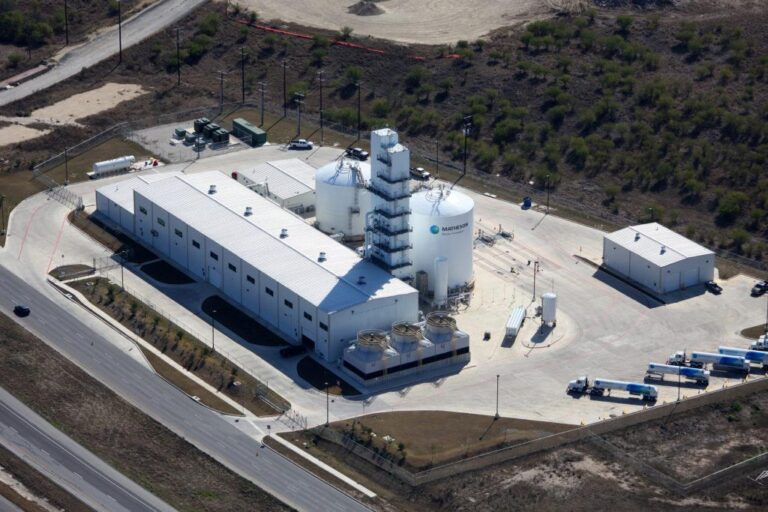Matheson’s New Air Separation Facility: A Major Leap in Industrial Gas Supply for Las Vegas
Matheson, a prominent supplier of industrial gases and related equipment, has revealed plans to establish a cutting-edge air separation plant in Las Vegas, Nevada. This new facility aims to substantially increase the company’s production capabilities, streamline supply logistics, and address the rising demand for ultra-pure gases across diverse industries such as healthcare, electronics, and manufacturing. Utilizing advanced technologies, the plant will produce high-quality oxygen, nitrogen, and argon gases customized to meet the specific needs of the southwestern U.S. market.
Las Vegas was strategically selected for its excellent transportation links and proximity to key industrial hubs.The project is anticipated to generate numerous employment opportunities and contribute positively to the local economy. Noteworthy aspects of the growth include:
- Innovative air separation methods designed to lower energy usage
- Comprehensive safety protocols adhering to the highest industry standards
- Modular plant design allowing for future capacity expansions
- Eco-friendly initiatives aimed at reducing environmental impact
| Specification | Details |
|---|---|
| Daily Output | 150,000 NmÂł |
| Facility Footprint | 25,000 square feet |
| Projected Launch | Q4 2025 |
| Capital Investment | $75 million |
Market Implications and Operational Advantages Highlighted by Industry Specialists
Experts in the industrial gas sector agree that Matheson’s initiative to build an air separation plant in Las Vegas will significantly transform supply chain dynamics in the region. This facility is expected to improve the availability of high-purity gases essential for sectors like healthcare, electronics manufacturing, and general industry, thereby reducing reliance on distant suppliers and cutting transportation expenses.The plant’s location offers a strategic edge by optimizing distribution routes and enhancing service reliability.
- Expanded Market Reach: Strengthening presence in the western U.S. through localized production.
- Improved Efficiency: Faster processing and delivery times due to proximity.
- Lower Environmental Impact: Decreased emissions by shortening supply chains.
From a technological perspective, the plant will incorporate advanced cryogenic systems designed to maximize energy efficiency and ensure consistent gas purity. This approach is expected to reduce operational costs while maintaining high-quality output. Additionally, the facility’s scalable framework will allow Matheson to quickly adapt to market fluctuations and future growth opportunities.
| Operational Focus | Expected Benefits |
|---|---|
| Advanced Cryogenic Technology | Enhanced energy savings and product consistency |
| Flexible Plant Design | Capacity adjustments aligned with demand shifts |
| Strategic Location | Reduced delivery times and cost efficiencies |
Innovative Technologies and Sustainability Efforts Driving the New Plant
The upcoming air separation plant will leverage the latest technological advancements to boost operational performance while minimizing environmental impact. Employing elegant cryogenic distillation enhanced by AI-powered automation and real-time monitoring, the facility will achieve extraordinary purity levels in oxygen and nitrogen production with optimized energy consumption. These innovations guarantee consistent product quality and significantly reduce the carbon emissions typically associated with conventional air separation processes.
Environmental responsibility is a cornerstone of the project’s design. The plant will incorporate several green initiatives tailored to the arid Las Vegas habitat, including:
- Water Recycling Systems: Minimizing freshwater use by reclaiming and reusing process water.
- Solar Energy Integration: Supplementing power needs with renewable solar installations.
- Emission Reduction Technologies: Utilizing advanced filtration and scrubbers to limit greenhouse gases and pollutants.
These measures reflect Matheson’s dedication to lasting industrial growth, balancing high-efficiency production with environmental stewardship.
Strategic Recommendations for Stakeholders in the Expanding Air Separation Market
To fully leverage the burgeoning opportunities within the air separation sector, stakeholders should focus on innovation, collaboration, and sustainability. Investing in cutting-edge technologies such as cryogenic and membrane-based separation methods can drive operational efficiencies and cost reductions. Aligning with environmental regulations and adopting green practices will not only ensure compliance but also attract environmentally conscious customers. Essential strategies include:
- Building partnerships between technology innovators and industrial consumers to optimize supply chains.
- Utilizing data analytics and automation for enhanced plant performance and predictive maintenance.
- Exploring specialized markets, including medical-grade oxygen and rare specialty gases.
Moreover, prioritizing workforce development and community relations is vital for sustainable success. Implementing training programs to cultivate skilled technicians and engineers can mitigate labor shortages, while clear stakeholder engagement fosters regulatory adherence and public confidence. The table below summarizes key focus areas and their benefits for participants in this dynamic industry:
| Focus Area | Benefit |
|---|---|
| Technological Advancement | Greater efficiency and reduced costs |
| Regulatory Compliance | Market access and legal adherence |
| Workforce Development | Availability of skilled labor |
| Community Involvement | Enhanced trust and support |
Conclusion: Matheson’s Commitment to Growth and Sustainability in the Southwest
As Matheson advances with its new air separation plant in Las Vegas, the company reaffirms its dedication to expanding production capacity and servicing vital industrial sectors throughout the region.This $75 million investment not only signals Matheson’s growth trajectory but also addresses the escalating demand for high-purity gases in the western United States. The facility is poised to strengthen supply chain resilience, foster local economic development, and set a benchmark for sustainable industrial practices. Updates on the project’s progress will be shared as milestones are achieved.




